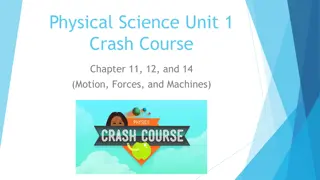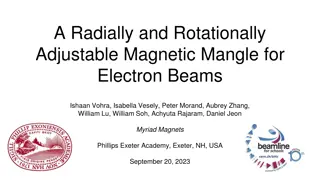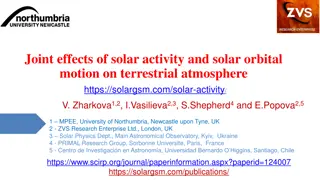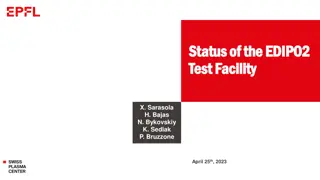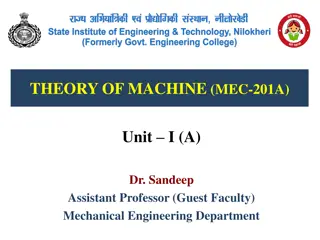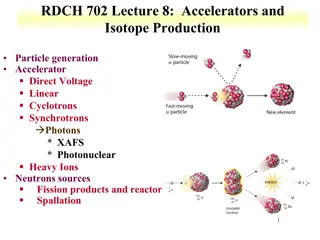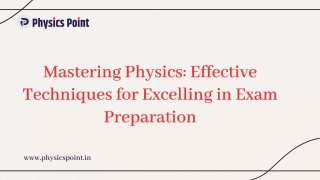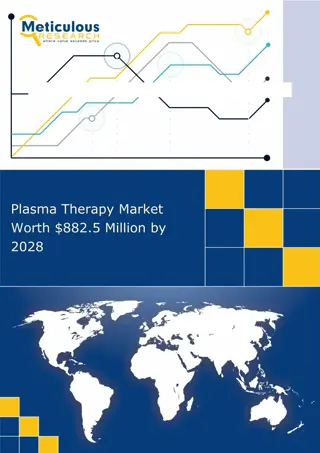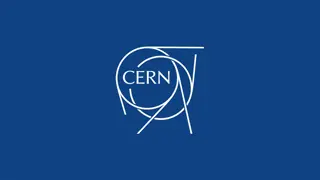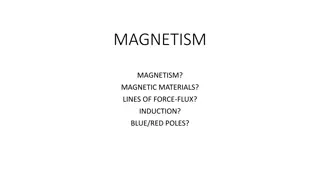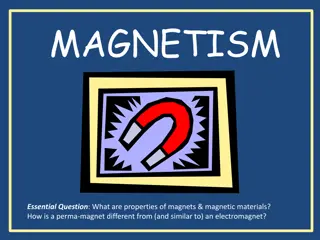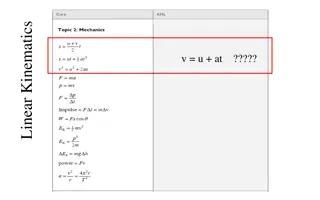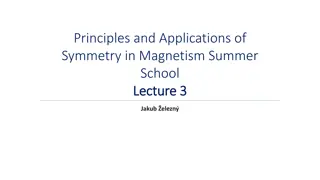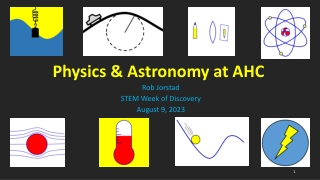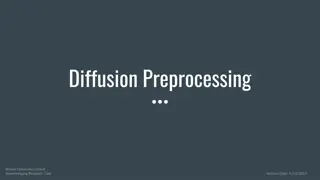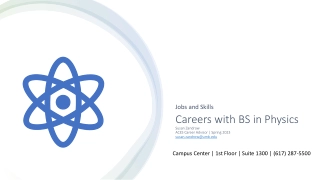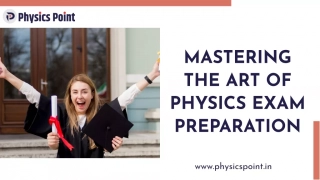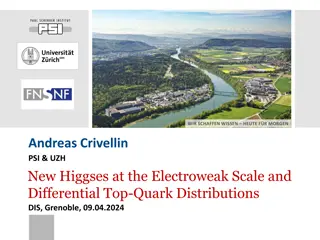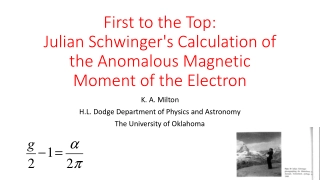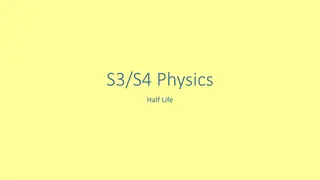Understanding Plasma Physics: Single Particle Motion in Magnetic Fields
Delve into the intricate dynamics of single particle motion in plasma physics, focusing on the crucial role of magnetic fields for plasma confinement in fusion environments. Explore concepts such as magnetic mirrors, E.B. drift, and Tokamaks, essential for comprehending the behavior of ions and electrons in high-temperature plasma.
Understanding Plasma Physics: Single Particle Motion in Magnetic Fields
PowerPoint presentation about 'Understanding Plasma Physics: Single Particle Motion in Magnetic Fields'. This presentation describes the topic on Delve into the intricate dynamics of single particle motion in plasma physics, focusing on the crucial role of magnetic fields for plasma confinement in fusion environments. Explore concepts such as magnetic mirrors, E.B. drift, and Tokamaks, essential for comprehending the behavior of ions and electrons in high-temperature plasma.. Download this presentation absolutely free.
Presentation Transcript
Introduction to Plasmas, Part I I Single Particle Motion Priyanjana Sinha, Princeton Plasma Physics Laboratory Email: psinha@pppl.gov SULI Introductory Course on Plasma Physics 6th June 2023
2 My journey so far . 2009 -2012 2012 -2015 2015-2019 (since Sep. 2019) Associate Research Physicist Masters in Nuclear Sci. & Tech University of Delhi Ph.D in plasma physics Undergrad: Hansraj College, University of Delhi Institute for Plasma Research, Gujarat Worked on the world s largest stellarator W7-x located in Germany Master thesis project SULI Introductory Lecture on Plasma Physics - Part II
3 Need for plasma confinement! We require high temperatures for fusion roughly T 5 10 keV or 50 100 M Kelvin 1 2 ?? 2 For ions: ??? = ? = ? very high velocities ?? = 6 ? 105 ?/? Stop the motion from high ? to low ? region (serious issue!) confine the plasma Popular solution: use magnetic field Need to understand e- and ion motion in inhomogeneous magnetic field SULI Introductory Lecture on Plasma Physics - Part II
4 Outline Motion of particle in uniform magnetic field Magnetic mirrors Motion of particle in crossed fields - drift of charged particle in E B - drift of charge particle due to B - drift of charge particle due to curvature in B Tokamaks SULI Introductory Lecture on Plasma Physics - Part II
5 Motion of particles in uniform magnetic field SULI Introductory Lecture on Plasma Physics - Part II
6 Motion of particles in uniform magnetic field Simple case Force experienced by charged particle (?) with velocity ? in presence of electric fields and magnetic field Lorentz force: ? = ?(? + ? ? ?) For electron: charge = - ? mass = ? Assuming external magnetic field in z direction: ^ and E =0 ?? || z Gyro-frequency or cyclotron frequency: Bs ?? ?? = - ? (? x ??) ? ??? ? ^ ??= ?? ?? = - ?? (? x z) SULI Introductory Lecture on Plasma Physics - Part II
7 Motion of particles in uniform magnetic field Simple case vy ??? ?? = - ??? y ??? ?? = ??? x ??? ?? = 0 ? direction : coupled ? direction : ? direction : vx ?2?? ??2 = - ??2? y ?2?? ??2 = - ??2? x ?? = + ?sin (?? t + ? ) ?? = ?cos (?? t + ? ) where: ? 2 = ? x 2 + ? y 2 ?? = ? , at t = 0, ?? = 0 assume ? = 0 at t = ? 1 ?? = ? ??,?? = 0, 2 SULI Introductory Lecture on Plasma Physics - Part II
8 Motion of particles in uniform magnetic field Simple case vy For ions: charge = ? mass = ?? ?? ?? = ? (? x ??) Gyro-frequency for ion: ?? ??? ?? ???= vx ^ ?? ?? = ??? (? x z) much smaller than e- ??? ?? = ???? y ??? ?? = - ????? ??? ?? = 0 x direction : coupled y direction : z direction : ? y = - ? sin (??? t + ? ) ? x = v cos (??? t + ? ) Taking into account the charge of particle SULI Introductory Lecture on Plasma Physics - Part II
9 Motion of particles in uniform magnetic field Simple case ?? ?? = ?x = ? cos (?? ?? ?? t + ? ) ?? y ?? ?? = ?y = + ? sin (?? ?? ?? t + ? ) - ?? (xg , yg ) ? x = xg + ?? sin (?? ?? ?? t + ? ) ? y = yg - ?? cos (?? ?? ?? t + ? ) + x 2 ? ? (x xg)2 + (y yg)2 = ?e1/2 Te1/2 Larmor radius for e-= ?? = ?? ?? ? Larmor radius for ion = ??= ?i1/2Ti 1/2 Equation of a circle with center (xg, yg) ??? ?? ??> ?? ?? > ?? SULI Introductory Lecture on Plasma Physics - Part II
10 Motion of particles in uniform magnetic field Simple case ??? ?? = 0 ??= ??? z direction : ?? ?? = ??? Charge particles move freely along z axis ? = ?? + ??? ? ^ ^ ^ ? = [?? ?? ? sin (?? ?? ?? t + ? ) + xg ] x [?? ?? ? cos (?? ?? ?? t + ? )] + yg ] y + ??+ ??? ? ? + SULI Introductory Lecture on Plasma Physics - Part II
11 Some estimates for ITER like machine Ti = Te = 10 keV and B = 5T For ITER like machines: ???? ?? ?? ?? ?? 3 mm 700 km/s rL= For ions ???= For electrons rL 0.05 mm (60 times smaller) ??? ? 1.6 ? 10 19 ? 5 9.1 ? 10 31 ??= 8.5 ? 10 11 ???/? frequency of wave to heat plasma for ions is much lower -- 1/1836 times Gyro-frequency of electrons : ??= - ??= - ??= 135 ??? to heat the electrons in plasma the wave should be of this frequency SULI Introductory Lecture on Plasma Physics - Part II
12 Magnetic Mirrors SULI Introductory Lecture on Plasma Physics - Part II
13 Magnetic mirrors - ???? ?? ?? field in confinement ? = 0 1 ? ?(??? ) ?? + ???? B depends on on r and z, no azimuthal dependence = 0 ?? ?2 2+ c1 ? ?? = -???? ?? ?? = -???? ? 2 L= L0/2 L=0 ?? Bmin Bmax ? = ??+ ?? ? ??? ?? = - q (v x B)z Magnetic mirror was one of the earliest major approaches to fusion power ??? ?? = - q (v? Br) ? exerts a force in - z direction Here, ?? is inhomogeneous and varying with z SULI Introductory Lecture on Plasma Physics - Part II
14 Magnetic mirrors - ???? ?? ?? field in confinement ? ?= ? ?? 2? ? = 2 2 2 Magnetic moment = ? = ?? =? ?? ? ?? = ?? 2?? = ?? 2? ? 2? ? ??? ?? = - q (v? Br) ? ?? = -???? ? 2 ?? 2 2 ??? ??= -?? ??? ?? = -?? ??? ?? ? 2?? 2? ? ?? ? = ??? ?? = - ???? ?? ? SULI Introductory Lecture on Plasma Physics - Part II
15 Magnetic mirrors energy conservation 1 2? ? 2 + 1 2? ??2 ? = ?? ?? = q (v x B) ? ? ? ?? ?? = 0 1 2? ?2 = constant of motion 2 2 Energy is constant, so ?? 2 + ??? 2? is constant If ? increases,then ?? decreases B = Br + Bz Very small B Bz SULI Introductory Lecture on Plasma Physics - Part II
16 Magnetic mirrors constant magnetic moment ?(???2) ?? ?(??) ?? = -1 2 ?(??) ?? = -??? ??? ?? ?(??) ??= ??? ( ? ?? ??) ?(??) ??= ? ??? ?? ?? ??+ B?? B?? ??= 0 ? is constant = ?? ??= ??? ?? 2 2? ??? ?? = - ???? ?? ? B increases, ? increases ?? decreases (from energy conservation) SULI Introductory Lecture on Plasma Physics - Part II
17 Magnetic mirrors critical angle for confinement when ? = max = ?0, ?? = 0 reverse its direction particles bounce back and forth trapped e/ions confined ?? not always zero at the throat passing particles What is the minimum value of ? that that will cause reflection? L= L0/2 L=0 2 2 ? = ??0 2???? = ??0 ?0 = ?0 2???? 2 + ?0?2 2 ?0 ?0 ???? ???? = 1 1 Sin ?0= ? ? 2= ? ? at L = 0 ? = ?0 ?? = ?0? at L = L0/2 ? = ?0 ?? = 0 ? = ??= critical angle SULI Introductory Lecture on Plasma Physics - Part II
18 Motion of particle in crossed field E B SULI Introductory Lecture on Plasma Physics - Part II
19 Motion of particle in crossed field E B Understand the dynamics of charged particles in inhomogeneous field y ^ ^ E || x Bs || z and External fields: ?? ?? = - eE - e (? x Bs) For electron: ? E ??? ?? = - eEx - e (? y Bs) X- component: ? x Bs ??? ?? = - e ?x Bs ? Y- component: z ?? = ?? +?? ??= ?? ?? ?? ?? SULI Introductory Lecture on Plasma Physics - Part II
20 Motion of particle in crossed field E B ??? ?? = - e (?? x Bs) X- component: ? ??? ?? = e vx Bs Y- component: ? = ? sin (?? t + ? ) ?? ? x = ? cos (?? t + ? ) = ? sin (?? t + ? ) ?? Additional force ?? ?? ??x ?? ??2 ??= ?? DC drift of the particle which is independent of charge and mass ?? = - SULI Introductory Lecture on Plasma Physics - Part II
21 Motion of particle in crossed field E B ??x ?? ??2 ??= ?? ?? = Takes particle away from lines of force/magnetic field region serious problem! Both e- and ions moves together in y direction SULI Introductory Lecture on Plasma Physics - Part II Courtesy: Dr. Cami Collins
22 Generalized form of drift caused by external force F ?? ?? ?? = - e (v x Bs) + F ? ??x (? x ??) ?? ? x ?? x ?? ??2 =?(?? ??) ?? -?? (? ??) ?? ? = 2 2 2 ? = assume: ? =? +? x ?? ?? ?? = -e v + ? x ?? ?? x ?? ? ??2 2 ??rift =? x ?? ?? ?? = - e (v v x B Bs s) general expression ? ???2 SULI Introductory Lecture on Plasma Physics - Part II
23 Other forces that can cause drift ??rift =? x ?? Gravitational force = F = mg mi >> me ??? ??? ???2 For electric force, this drift is similar in magnitude Two other types of drifts that is present in tokamak: curvature drift and B Rc Btotal 1/R SULI Introductory Lecture on Plasma Physics - Part II
24 Drift of charge particle due to B SULI Introductory Lecture on Plasma Physics - Part II
25 Drift of charge particle due to B ^ assume Bs = Bs (x) z x dependence ^ ?? ?? = - e ? x Bs(x) z For electron: ? Bs (x) = Bs (xg + (x- xg)) = Bs (xg) + ??? ?? | (x xg) at x= xg = Bs (xg) + ??? ? ?? sin(?c t) ?? ?? ?? = - e ? x z Bs (xg) + ??? ?? ? ^ ?? sin(?c t) ? SULI Introductory Lecture on Plasma Physics - Part II
26 Drift of charge particle due to Grad B drift X direction: ??? ?? = - e ?yBs (xg) + ??? ?? ? ?? sin(?ct) ? ??? ?? = - e ?y Bs (xg) e ? sin(?ct) ??? ?? ? ?? sin(?ct) ? 2 ?? = - e ?y Bs (xg) e ? ??? ??? ?? ? 2?c ??? ?? = - e vy Bs (xg) + ?? Additional force ? Y direction: ??? ?? = - e ? xBs (xg) + ??? ?? ? ?? sin(?ct) ?? = ? cos (?? t) ?? = ? sin (?? t) ? ??? ?? = - e ? x Bs (xg) e ? cos (?ct) ??? ?? ? ?? sin(?ct) ? SULI Introductory Lecture on Plasma Physics - Part II
27 Drift of charge particle due to Grad B drift 2 2 F = ?? 2?? ??=?? ?? 2?? ?=? x ?? D ???2 2 ??i 2???2 ??x ?? ? = B For ion : 2 ? = ?i?? B 2???2 ??x ?? For e- : ? ?? ? ? ??? Larmor radius: ? = 2 2 ???~ Ti ?? ~ Te = If Te =Ti ? are equal The gyro-radius will be smaller where Bs is larger and vice-versa B Space charge separation is created, leads to E XB drift SULI Introductory Lecture on Plasma Physics - Part II
28 Drift of charge particle due to curvature in B SULI Introductory Lecture on Plasma Physics - Part II
29 Drift of charge particle due to curvature in B ^ Assume Bs ? Radial motion ? (? ??2)= e (vxB)r ? (? ??2)= e vz Bs ??? ?? = e vz Bs + mr?2 ? ??? ?? = e vz Bs + mr?2 ? Additional force F = ?r?2 Rc F = ?Rc?2 Rc F =? ? ^ Z motion ^ ??= ? ? = ? ??? ?? = - e vr Bs ? 2 ^ Rc ?? SULI Introductory Lecture on Plasma Physics - Part II
30 Drift of charge particle due to curvature in B ?????=? x ?? ???2 ^ ?? x BS ??2 2 For e : ????? = ? ? ??? ^ ?? x BS ??2 2 : v???? =? ?? For ion ??? ? v???? ~ ?? ?? If Te = Ti , v???? similar in magnitude for e- and ions Production of magnetic field is expensive SULI Introductory Lecture on Plasma Physics - Part II
31 Total drift on charge particle due to curvature in B and grad B Gradient drift + curvature drift in same direction for each species, so they add up ?? x ?? ??2 ? ??? ? +1 2 2 ?????+ ? = 2? B Charge separation causes E to be generated ? x ?? ??2 ??= Suppress the drift tokamak configuration Courtesy: Dr. Cami Collins SULI Introductory Lecture on Plasma Physics - Part II
32 Tokamak solution: Add poloidal magnetic fields Need to twist field lines helically to compensate particle drifts Toroidal: long way around Poloidal : short way around 1. Use external coils to produce toroidal magnetic field 2. Drive toroidal current in plasma to generate a poloidal magnetic field Issues related to driving plasma current + disruption plasma phenomenon a major problem! Courtesy: Dr. Cami Collins SULI Introductory Lecture on Plasma Physics - Part II
33 Difference between two leading magnetic confinement concepts Tokamak (axisymmetric) Stellarator (3D nonaxisymmetric) Toroidal Field generated by external coils Poloidal field generated by plasma current Total Field has a twisted field structure Twisted magnetic field is created by external twisted magnetic coils SULI Introductory Lecture on Plasma Physics - Part II
34 Conclusions Charged particles undergo gyromotion about magnetic fields, and are free to move along the magnetic field line Depending on magnetic field geometry or the presence of other forces like electric fields, particles can drift across field lines (and even leave the system and hit the walls) Toroidal confinement devices have magnetic fields in both the poloidal and toroidal direction to compensate for these drifts SULI Introductory Lecture on Plasma Physics - Part II
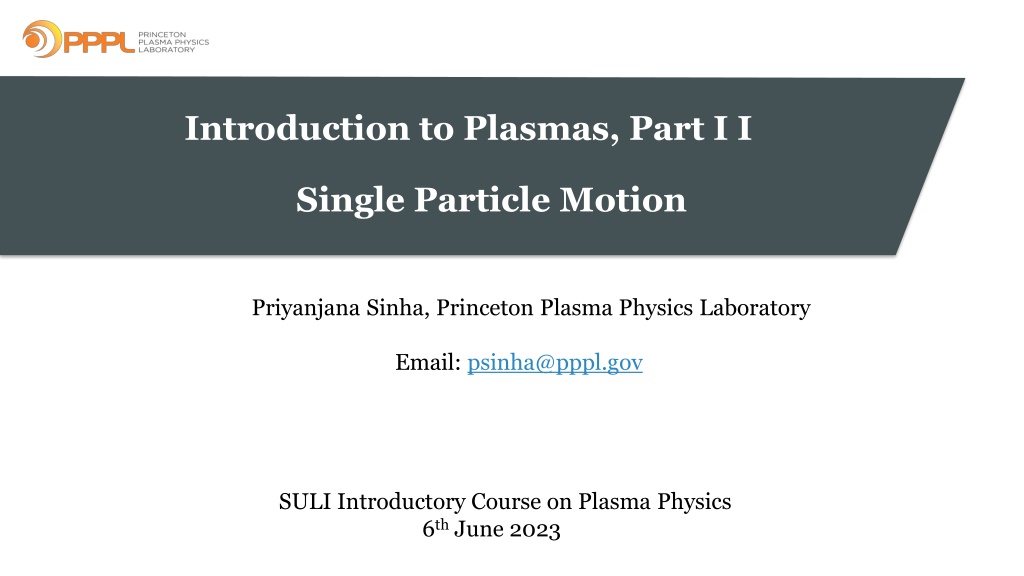

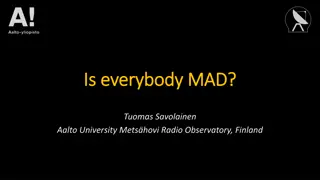
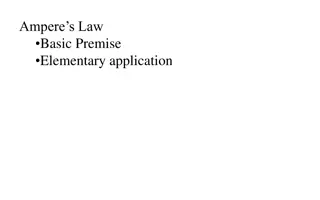

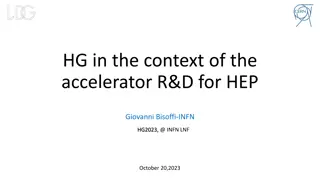


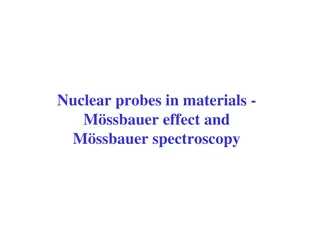
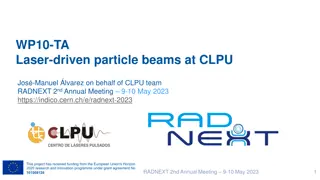
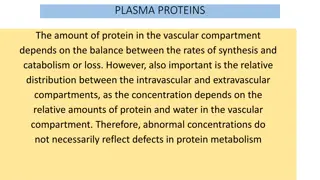
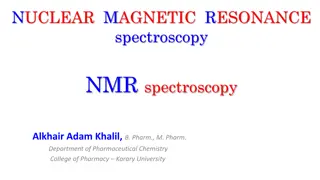
![[PDF⚡READ❤ONLINE] Cosmology and Particle Astrophysics (Wiley-Praxis Series in As](/thumb/21627/pdf-read-online-cosmology-and-particle-astrophysics-wiley-praxis-series-in-as.jpg)

